The Torta Mimosa is the iconic dessert for Women’s Day in Italy (March 8). One of the most popular versions of this Italian layered lemon cake recipe includes layers of Italian Sponge Cake soaked in Limoncello. If you’d prefer a non-alcoholic version, you can use lemonade or lemon simple syrup instead.
Watch the Video Recipe!
Learn how to make this Italian Lemon Cake recipe with this video, filmed in Italy:
Subscribe to our YouTube Channel
More video recipes? Subscribe to our YouTube Channel (it’s FREE) and click the bell to get notifications when we release a new video recipe!
How to Make Italian Lemon Cake (Torta Mimosa)
If you know how to make sponge cakes and make custard, this recipe is ‘a piece of cake’! If you don’t… read on! We’ll share all of the secrets for making this showstopper Italian cake.
The Torta Mimosa always calls for some kind of flavored liquid (usually liquor) for soaking the Italian sponge cake—also called Pan di Spagna. If you choose the traditional Limoncello, this is the perfect adult birthday cake or special occasion cake.
This layered Italian lemon cake is filled with Diplomat Cream. Diplomat Cream is nothing more than traditional pastry cream plus chantilly cream. If you don’t know how to make these pastry essentials already, you will by the end of this project!
How to Make Italian Sponge Cake (Pan di Spagna)
We call this an Italian sponge cake because it is a staple ingredient in many traditional Italian desserts—including this recipe and the famous Zuppa Inglese. However, technically, this cake is thought to have originated during the Renaissance in Spain—thus the name. Pan di Spagna literally means spanish bread.
This recipe reflects what was probably one of the original recipes for Pan di Spagna, when whipped eggs was one of only sources of levitation for cakes and baking powder didn’t yet exist. This recipe is made the traditional way: with perfectly whipped eggs to provide the cake’s rise.
A sponge cake acts like a sponge— it soaks up liquid wonderfully without disintegrating into a crumby mess. It’s aided in this mission by the addition of cornstarch (or, sometimes, potato flour). You can use these flours alone or in combination with normal wheat flour as we are doing in this recipe. Here are some tips to remember when making the Pan di Spagna for this recipe:
Whip Eggs Warm
Eggs always whip better when they are warm. You can leave whole eggs out of the fridge at room temperature for an hour, but in our experience that doesn’t result in warm enough eggs.
Instead, warm your eggs briefly over a double boiler till they are lukewarm. Or, add a tablespoon of hot water to the eggs as you start whipping them.
Whip the eggs for 15 minutes… no less!
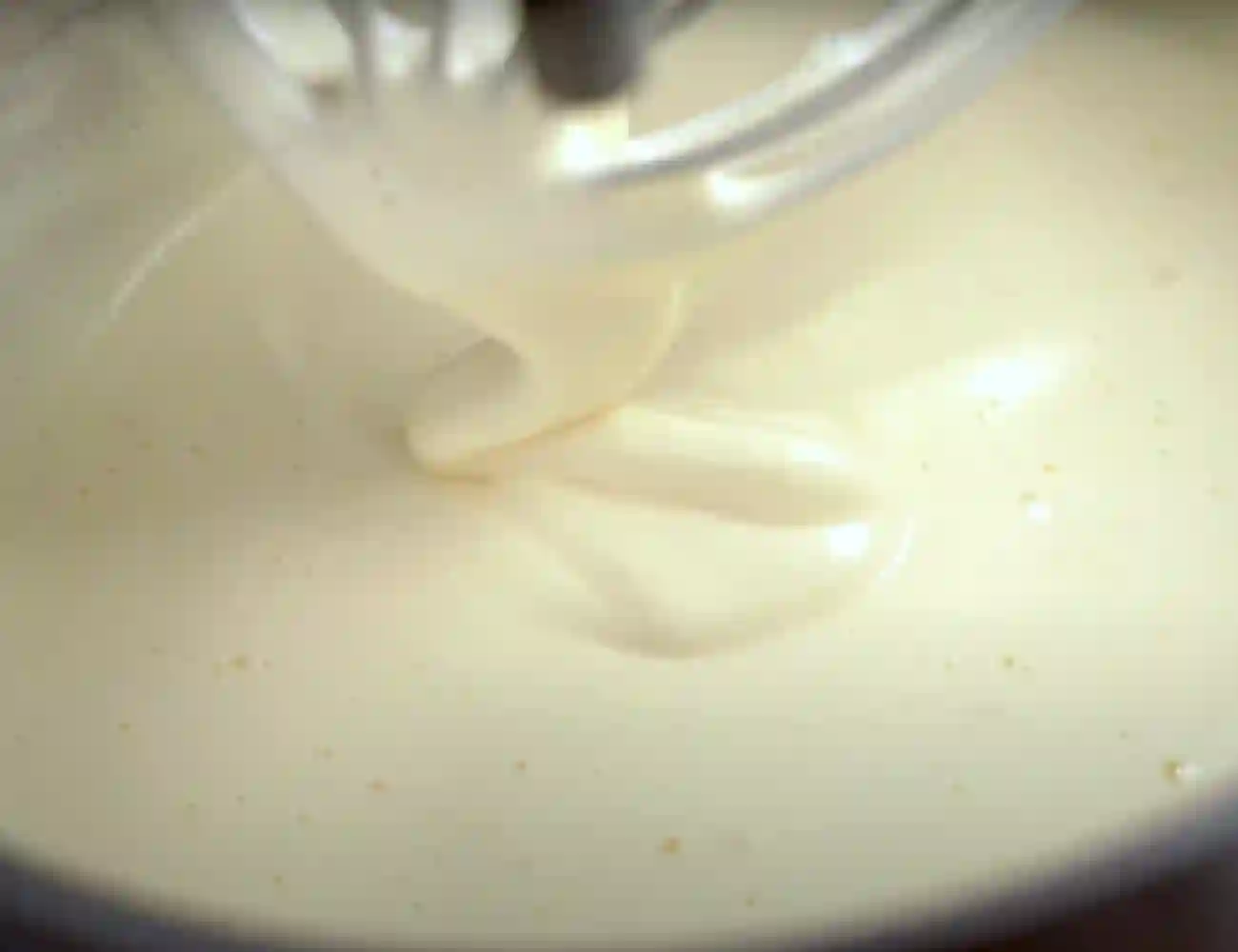
Eggs for the Italian Sponge Cake can be whipped different ways—yolks whites separately, or using whole eggs. Here we keep it simple with whole eggs.
The eggs really do need to whip for 15-20 minutes to reach the right consistency.
Sift and Fold the Flour—Little at a Time!
It’s critical to maintain the air you’ve whipped into the eggs in order for your cake to get a good rise. For this reason, you’ll want to sift the flours in a little at a time— about a tablespoon at a time! If you start to see the whipped eggs sink under the weight of the flour, you’ve added to much!
Fold the flour into the whipped eggs as you would fold egg whites into batter. Fold gently, using a bottom to top motion.
Check out our masterclass on making Italian Sponge Cake!
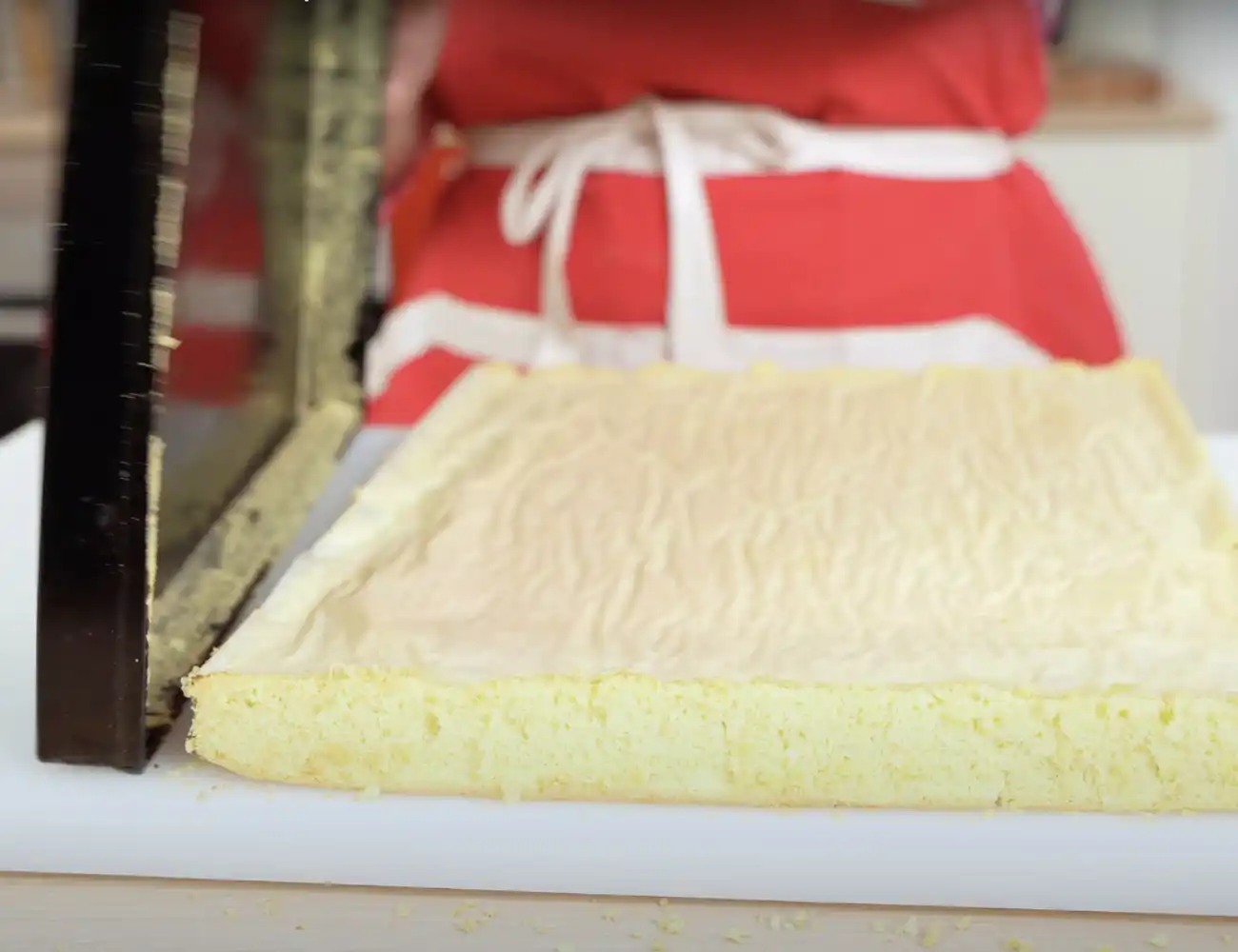
How to Make Pastry Cream
To make pastry cream, heat up milk and vanilla in a pot until it is hot but not boiling.
In the meantime, whisk together the rest of the pastry cream ingredients. Here, those ingredients are: egg yolks, sugar, cornstarch, and flour. Whisk until you’ve got a thick, smooth paste.
Slowly pour the hot milk into the egg mix, whisking continuously—a process called ‘tempering’ the eggs. Then, we always strain the mix as we pour it back into the pot for thickening. Cook the custard until it is thick. Then comes the magic…
An hour before you start making the pastry cream, put a large bowl into the freezer. When the custard has thickened, pour it directly into the ice cold bowl and whisk! This will drop the temperature rapidly creating the ultimate creamy custard!
Strain the mix!
After tempering the eggs with the milk, strain as you pour the mix back in the pot. This will remove any small clumps that you have have missed when whisking.
Cool the pastry cream in an ice cold bowl!
Instead of immediately covering the pastry cream and popping it into the fridge, transfer it to an ice cold bowl and continue whisking. Then, when it is cool, cover and put it in the fridge.
Be sure to place plastic wrap directly on the custard (not on top of the bowl). Any air at all over the custard can cause a skin to form.
How to Make Diplomat Cream
To make Diplomat Cream, we just combine our cooled pastry cream with a bit of whipped cream flavored with sugar (Chantilly Cream).
Assembling the Italian Layered Lemon Cake
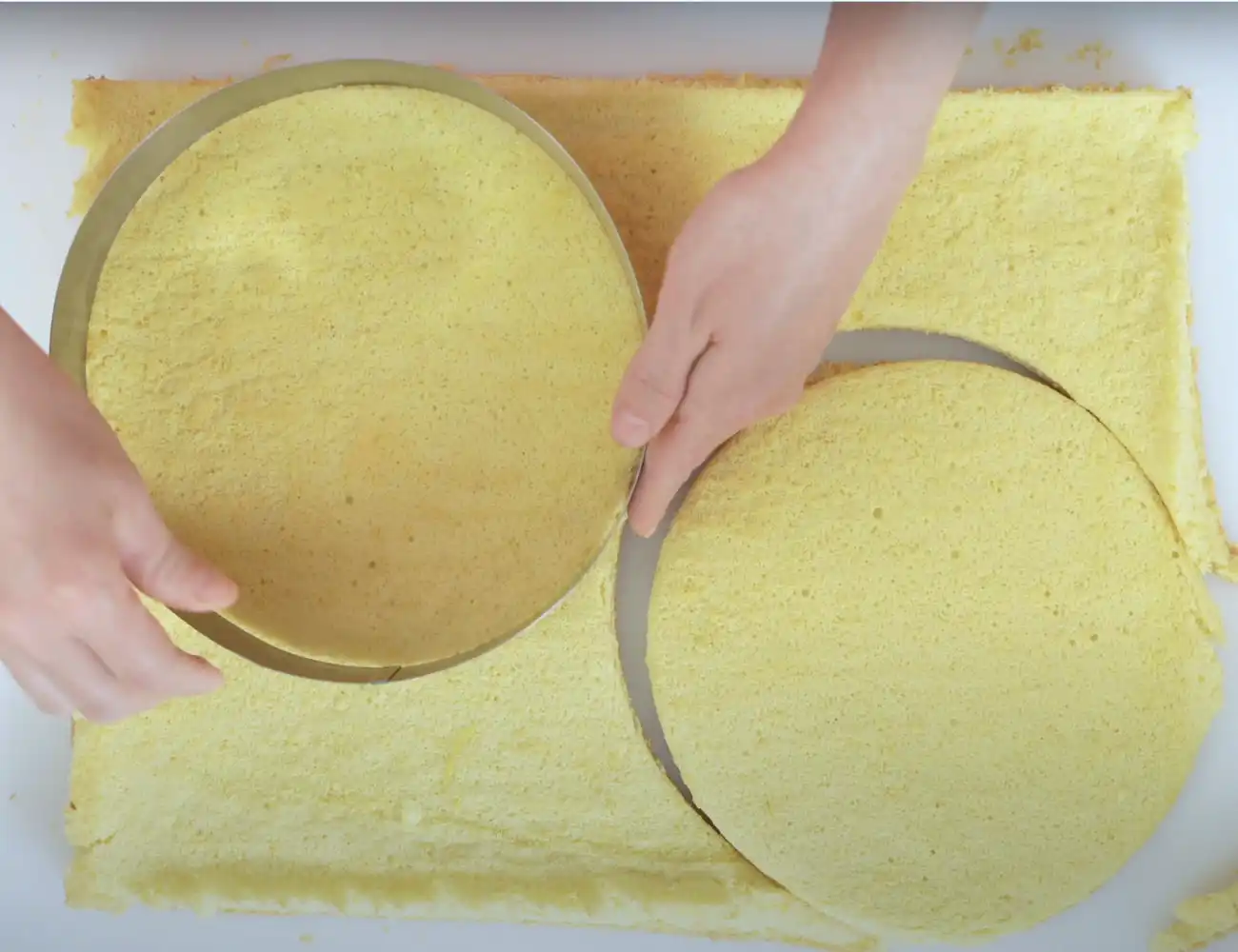

Check out our step-by-step directions for making this Italian Lemon Cake below!
As an Amazon Associate, we earn from qualifying purchases. This means at no extra cost to you, PIATTO may earn a small commission if you click the links and make a qualifying purchase.
Discover More Classic Italian Desserts
Italian Layered Lemon Cake (Torta Mimosa)
Equipment
- Stand Mixer (or electric hand mixer)
- 15" x 12" (40 cm x 30 cm) Baking Pan or Cookie Sheet
- whisk
Ingredients
FIRST CAKE
- 6 whole eggs
- 1 cup granulated sugar
- 3 tbsp hot water
- ¾ cup cake flour or all-purpose with low gluten
- ¾ cup cornstarch
- 1 lemon zest from one
SECOND CAKE
- 6 whole eggs
- 1 cup granulated sugar
- 3 tbsp hot water
- ¾ cup cake flour or all-purpose with low gluten
- ¾ cup cornstarch
- 1 lemon zest from one
PASTRY CREAM
- 2 cups whole milk
- 10 egg yolks
- 1 vanilla bean
- 1 lemon zest from one
- ⅔ cup granulated sugar
- 3 ½ tbsp cornstarch
- 3 ½ tbsp flour
CHANTILLY CREAM
- 1 cup heavy whipping cream
- ¼ cup powdered sugar
- ¼ vanilla bean
SOAKING CAKE
- 1 cup limoncello or lemonade
Instructions
MAKE FIRST SPONGE CAKE
- Sift together the cornstarch and flour and set aside.¾ cup cornstarch, ¾ cup cake flour
- Add whole eggs, granulated sugar and lemon zest to a stand mixer bowl fitted with the whisk attachment.6 whole eggs, 1 lemon zest, 1 cup granulated sugar
- Begin whipping the eggs at medium speed. Add 3 tbsp of hot water and continue whisking for no less than 15 minutes.3 tbsp hot water
- Whisk until you can ‘write’ with the egg mixture. In other words, when you drop egg on top of the rest of the whipped egg, they should sit on top distinctly and not sink into the rest of the eggs.
- Fold the sifted flours into the whipped eggs, 1 tablespoon at a time.
- Spread the cake batter evenly into a large baking pan or jelly roll pan.
- Cover the bottom (but not the sides) of the pan with parchment paper.
- Bake the cake at 350° F (180° C) for 15 minutes. Shut off oven, crack the oven door, and let cake cool inside of the oven slowly for 5-10 minutes.
- When cake is cooled, loosen edges and remove from the pan. Set aside.
MAKE SECOND SPONGE CAKE
- Follow the same instructions for making the first sponge cake.6 whole eggs, 1 cup granulated sugar, 3 tbsp hot water, ¾ cup cake flour, ¾ cup cornstarch, 1 lemon zest
MAKE THE PASTRY CREAM
- A half an hour before starting the pastry cream, chill a large bowl into the freezer.
- In a medium pot, bring the milk and vanilla to a simmer—hot but not boiling. If using fresh vanilla, split the pod and remove the seeds. Add the seeds and the pieces of pod to the milk as it warms.2 cups whole milk, 1 vanilla bean
- While the milk is warming, combine the egg yolks, sugar, cornstarch and flour into a large bowl. Whisk until the mix is thick and smooth.10 egg yolks, 1 lemon zest, ⅔ cup granulated sugar, 3 ½ tbsp cornstarch, 3 ½ tbsp flour
- When the milk is hot, remove the pieces of vanilla bean pod. Then, slowly pour the milk into the egg mix, whisking continuously. When all of the milk is whisked into the eggs, strain the liquid back into the milk pot.
- Add the lemon zest and and heat the custard over medium heat until it thickens. Whisk constantly to prevent lumps.
- When the custard has thickened, pour it into the chilled bowl, whisking continuously—this time to quickly cool down the custard.
- When the custard is mostly cool, lay plastic wrap or a silicon lid directly on top of the custard and put in the refrigerator.
MAKE THE CHANTILLY CREAM
- A half an hour before starting the pastry cream, chill a large bowl into the refrigerator. A cold bowl speeds up the process of whipping heavy cream.
- Combine the heavy cream and vanilla in a large bowl. Whip until soft peaks form.1 cup heavy whipping cream, ¼ vanilla bean
- Add the sugar and continue whipping until the cream is stiff. If you turn the bowl over, the cream should not move.¼ cup powdered sugar
MAKE THE DIPLOMAT CREAM
- Diplomat cream is simply pastry cream plus the chantilly cream we’ve made! Fold all of the chantilly cream into the pastry cream a little at a time.
- Fill a pastry bag full of the Diplomat Cream, setting aside about 1/4 of the cream for decorating the top and outside.
CUT THE CAKES
- Cut two rounds out of one sponge cake and one round out of the other.
- Dice the remaining cake into 1/4 inch (1/2 cm) pieces. These will serve as our fake mimosa flowers. We will use them to decorate the outside of the cake.
ASSEMBLE THE CAKE
- Place one layer of sponge cake on the serving dish. Use a pastry brush or squirt bottle to soak the top of the sponge cake with limoncello or lemonade.1 cup limoncello
- Top the first cake layer with 1/4 of the cream filling and. Spread it evenly. You can use a pastry bag (no decorative tip required) to pipe on the cream to get an even later.
- Top the cream with the second layer of sponge cake. Soak it with limoncello, top with more cream.
- Top that cream with a third (and final) layer of sponge cake. Soak it with limoncello and add a generous amount of diplomat cream to the top. Spread it to create a dome like effect.
- Apply any extra cream to the sides of the cake. Be sure there is a medium thick layer of cream on the sides. Use a wet cake spatula to smooth out the sides of the cake. This serves as a ‘stucco’ for attaching our little pieces of diced sponge cake.
DECORATE THE CAKE
- Apply handfuls of diced sponge cake to the sides and top of the cake. Start with roughly covering the entire cake with these ‘mimosa flowers.’ Then, fill any visible holes with individual pieces of the diced sponge cake.
- The goal is to have a cake completely covered in diced sponge cake. Chill before serving. Store in the refrigerator.
Video
Nutrition
🇬🇧 This is the English-language version of our original Italian recipe on PIATTO Ricette.
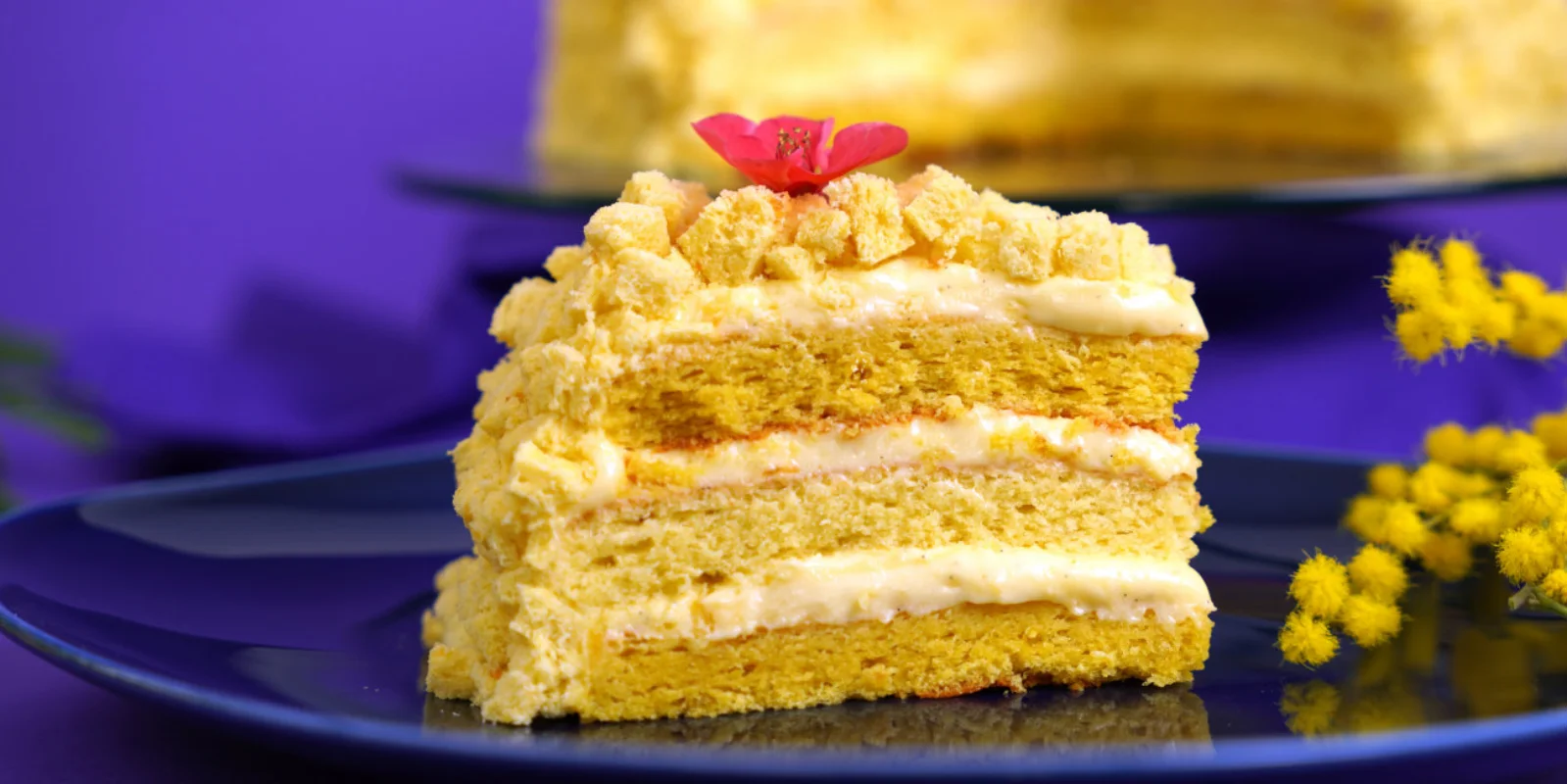
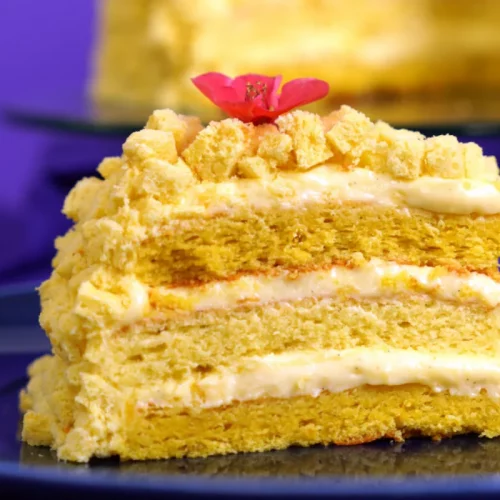
fantastic
Looks uncomplicated, thank you!!
Original comment: View on YouTube
Looks very nice, well done 🙂
Original comment: View on YouTube
Love lemon flavored dessert! It is so fresh and delicious! Awesome work, keep it up ❣️
Original comment: View on YouTube
Beautiful
Original comment: View on YouTube
Avevo in programma la mimosa per il compleanno di mia figlia questa è meravigliosa domanda: il pan di Spagna si può fare in unica dose cioè circolare e poi tagliare in tre strati seguendo tutti i passaggi ovvio giusto per accelerare i tempi grazie
Original comment: View on YouTube
muito boa parabens
Original comment: View on YouTube
Questa torta in onore delle donne e favolosaBella da vedere e buonissima da gustareBravi non vi smentite mai
Original comment: View on YouTube
Meravigliosa nella descrizione e nell’aspetto ma non avevo dubbi in proposito, per ora l’ho mangiata con gli occhi quando la farò (prestissimo) con la bocca grazie ragazzi
Original comment: View on YouTube
Splendida ricetta…..non ho mai fatto Pan di Spagna e creme così bene e buone. Presentazione ottima
Original comment: View on YouTube
Ma è semplicemente favolosa le immagini spettacolari
Original comment: View on YouTube
È splendida!
Original comment: View on YouTube